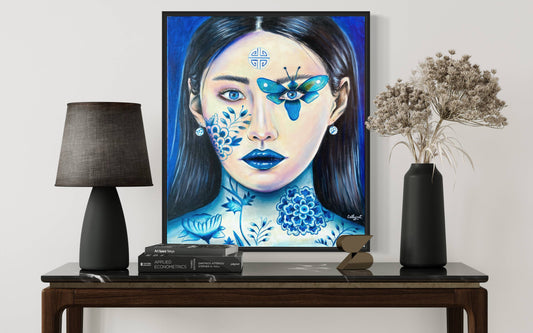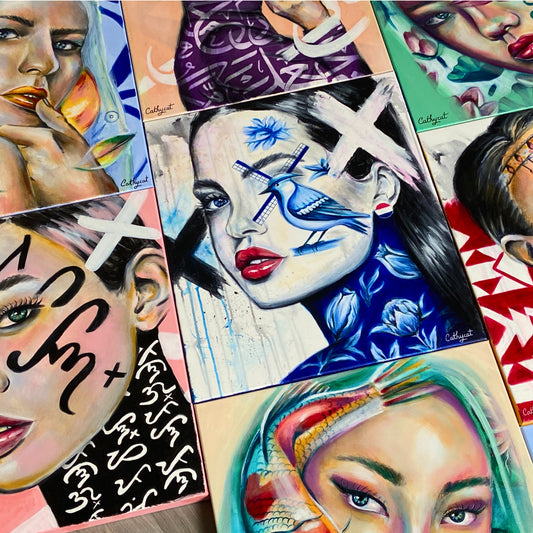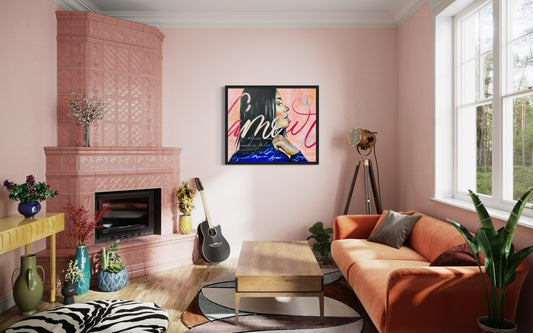
Original artwork often carries a significant price tag, and for good reason. The cost of original art is a reflection of the materials used, the artist’s skill and mastery, the hours of training, and the unique value that a one-of-a-kind piece brings. Understanding these factors can help art collectors and enthusiasts appreciate why original artwork is more than just a decoration—it’s an investment in creativity, craftsmanship, and cultural heritage. Here’s a closer look at why original artwork is so expensive.
1. High-Quality Materials
One of the primary reasons original artwork is expensive is the cost of high-quality materials. Artists often use premium canvases, fine art oil pigments, high-flow acrylics, and other specialized supplies to create their works. These materials are chosen for their durability, vibrancy, and ability to stand the test of time, ensuring that the artwork can be enjoyed for generations. For example, fine art oil paints are made with pure pigments and high-grade binders, resulting in rich, luminous colors that retain their vibrancy. Similarly, high-flow acrylics offer a smooth application and intense color, perfect for detailed work or expressive strokes. The investment in these materials is a significant factor in the final price of an artwork.
2. Artist’s Skill and Mastery
Creating original artwork requires a high level of skill and mastery, developed over years of practice and dedication. Artists spend countless hours honing their craft, learning techniques, and refining their style. This expertise allows them to create complex compositions, achieve precise details, and convey deep emotions through their work. The skill involved in producing original art is a key component of its value. When you purchase an original piece, you are not just buying a physical object; you are investing in the artist’s knowledge, experience, and creative vision.
3. Time Investment
Creating original artwork is a time-intensive process. From the initial concept to the final brushstroke, artists dedicate significant amounts of time to each piece. This includes sketching, planning the composition, selecting materials, and carefully executing the work. Some pieces may take days, weeks, or even months to complete. This time investment is reflected in the price of the artwork, as it represents the artist’s labor and commitment to creating something truly unique and meaningful.
4. Training and Education
Many artists have undergone extensive training and education to develop their skills. This might include years of formal art education at prestigious institutions, apprenticeships under master artists, or continuous self-study and practice. This training not only enhances their technical abilities but also deepens their understanding of art history, theory, and the broader cultural context in which they create. The cost of this education and the years spent refining their craft are factors that contribute to the higher prices of original artwork.
5. Uniqueness and Exclusivity
Original artwork is, by definition, one-of-a-kind. Unlike mass-produced prints or reproductions, an original piece is unique and cannot be replicated exactly. This exclusivity adds to its value, as collectors are often willing to pay a premium for something that no one else can own. Owning an original piece means possessing a work that is the sole expression of the artist’s creativity at that moment in time. This rarity and individuality are major factors in the pricing of original art.
6. Long-Term Value
Original artwork often appreciates in value over time, making it a worthwhile investment. As an artist’s reputation grows, the demand for their work increases, driving up prices. Collectors who purchase original pieces may find that their investment becomes more valuable in the future. This potential for appreciation is another reason why original art is expensive—buyers are not just purchasing a decorative item; they are acquiring a piece of cultural history with the potential for long-term financial return.
7. Supporting the Artist
When you buy an original artwork, you are directly supporting the artist who created it. Unlike mass-produced art, where profits are often divided among manufacturers, distributors, and retailers, purchasing original art ensures that a significant portion of the payment goes to the artist. This support enables artists to continue creating, exploring new ideas, and contributing to the cultural landscape. The price of original artwork reflects the importance of sustaining the creative community and allowing artists to pursue their passion.
8. Gallery Representation and Marketing
Many artists work with galleries that help promote and sell their work. Galleries provide a platform for artists to reach a wider audience and often take a commission from the sales. This partnership, while beneficial for the artist, can also influence the price of the artwork. The gallery’s commission, marketing efforts, and exhibition costs are factored into the final price, ensuring that both the artist and the gallery are fairly compensated for their contributions.
9. Emotional and Aesthetic Value
The value of original artwork goes beyond the tangible aspects of materials and labor. Art has the power to evoke emotions, provoke thought, and transform spaces. The connection that a collector feels with a piece, whether it’s the color, composition, or the story behind it, adds to its value. This emotional and aesthetic significance is a major reason why people are willing to invest in original art.
10. Cultural and Historical Significance
Original artwork often carries cultural and historical significance, reflecting the artist’s response to the world around them. This context can add to the value of a piece, as it becomes not just a work of art, but a commentary on society, politics, or the human experience. Collectors who value this cultural relevance are often willing to pay higher prices for artwork that resonates with them on a deeper level.
Conclusion
Original artwork is expensive because it represents much more than the sum of its materials. It embodies the artist’s skill, time, and dedication, as well as the unique value of owning a one-of-a-kind piece. By investing in original art, collectors not only acquire a beautiful object but also support the creative community, preserve cultural heritage, and potentially secure a valuable asset for the future. Understanding these factors helps to appreciate the true worth of original artwork and the importance of supporting artists in their creative endeavors.
Discover our original artworks and pop art contemporary portrait collection from Cathycat.


